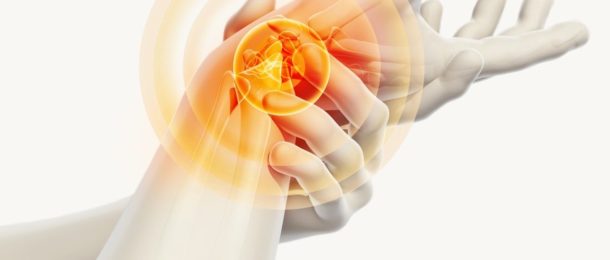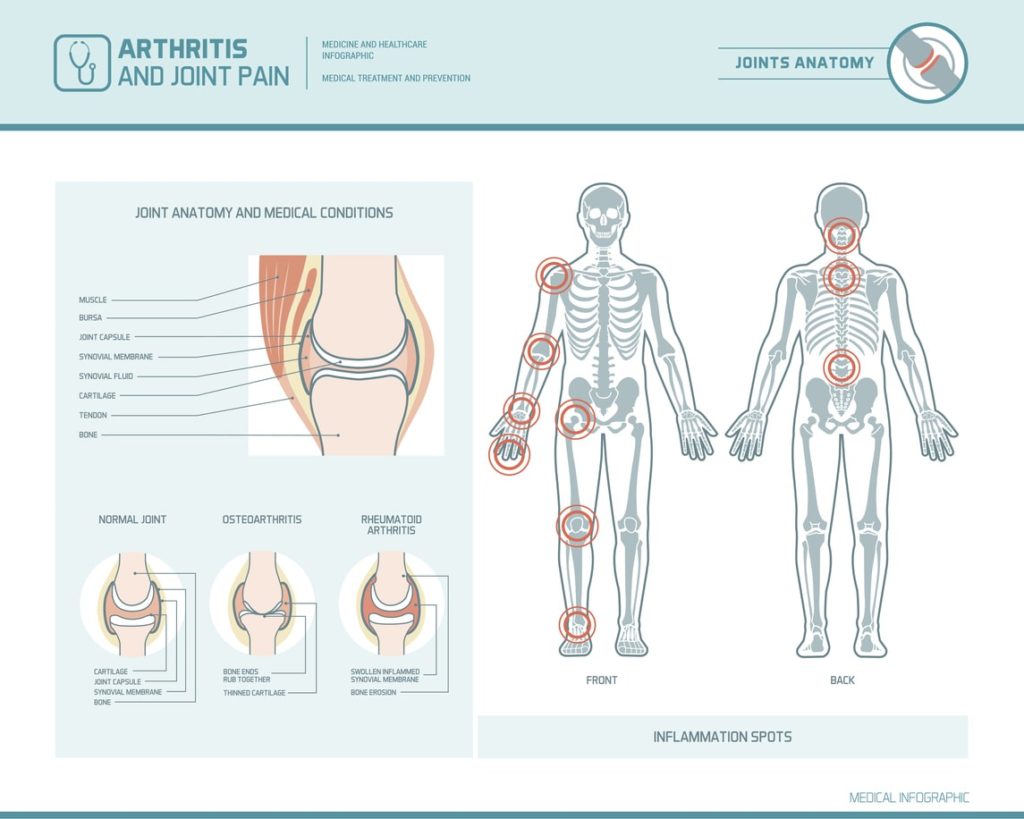Arthritis Awareness Month: How an Arthritis Treatment Center Can Help

May is Arthritis Awareness Month, so this year, we will discuss the different therapies offered at an arthritis treatment center that may help reduce pain.
According to the Arthritis Foundation, arthritis is the leading cause of disability in America. An estimated 54 million people, including adults and children, have been diagnosed with some form of arthritis. The most common form is osteoarthritis.
The feeling of pain is a signal that tells you something is wrong in your body. Pain from arthritis means there is something wrong in the area of your joints.
Acute vs. Chronic Arthritis
While your body releases its own painkilling chemicals, endorphins, this may not always be enough, depending on if the pain is acute or chronic.
Acute
Acute arthritis pain is temporary, it comes and goes. It can normally be treated with:
- Medication
- Hot and cold wraps
- Other simple therapeutic techniques
Acute pain can last for a few days or a few weeks, but not typically longer than that. Examples are an arthritic flair or gout attack.
Acute arthritis pain feels like sharp, shooting pains.
Chronic
Chronic arthritis pain lasts longer, for at least three months. It can even last years if not treated. Joint pain, migraines, and nerve damage are associated with chronic pain.
Examples include:
- Complex regional pain syndrome
- Fibromyalgia
Chronic arthritis pain feels like dull, throbbing aches and pains.
The good news is that there are treatments that can reduce the pain you feel.
Keep reading to discover methods of relief being used by specialty doctors at an arthritis treatment center.
Beginning Therapies Available at a Arthritis Treatment Center
You may have likely tried to treat your arthritis using the first line of defense for most arthritis sufferers. And they may have given you some relief.
These include analgesics like ibuprofen and naproxen. You may have even tried alternating heat and cold to treat the inflammation.
Another beginning therapy is the continue to exercise. This sounds counter-effective, but it is true that the more you can move your joints, the more your joints will stay flexible. This does not mean you need to participate in hard core aerobic activities.
Taking short walks and stretching can go a long way in treating arthritis.
While exercise is helpful, it may not always solve the problem on its own. Other techniques your arthritis treatment center doctor may want to try includes:
- Joint injections
- Medial branch blocks
- Join replacements
1. Joint Injections
Joint injections are exactly what they sound like, the doctor injects medicine directly into the joints. There is very little risk with this method that can alleviate swelling and pain in the joints.
Joint injections at an arthritis treatment center can help your doctor get a better diagnosis of what is causing your swelling and pain. He or she can analyze your joint fluid.
Doing so helps determine if it is gout, an infection or some other reason for the inflammation.
What gets injected into your joint is usually a simple combination of steroids and something to numb the area.
Depending on the location of the joint, your doctor may choose to use an ultrasound to help guide them to the right point.
Doctors have options when it comes to the type of injections to treat your pain.
– 1. Corticosteriod injections:
Typically, the first choice at an arthritis treatment center is a corticosteroid injection, which last for two or three months.
– 2. Hyaluronic acid injections:
If these don’t work, doctors may choose to use hyaluronic acid injections.
This type of injections is very similar to your natural joint fluid.
There are medical claims that hyaluronic acid coats the nerves and helps your body restore it natural fluids in the area of inflammation. It can last for up to six months.
– 3. Platelet-rich plasma injection:
A third type of joint injection is called platelet-rich plasma injection. These use your own blood and platelets to encourage healing of your arthritis.
Placental tissue matrix injections are also considered. This fourth type of injection is said to be a good pain reliever of pain from arthritis.
After resting and caring for the joint in the first two days after the joint injection, you should be feeling much better and the pain should subside.
Your arthritis treatment center can help you determine which type of injections are right for you.
2. Medial Branch Blocks
Back and neck pain can become unbearable for some. Using medial branch blocks can help ease this pain.
Your spine is lined with facet joints between each vertebra. They help with stability and flexibility. If they become inflamed due to arthritis, you may find it difficult to function.
This is called facet syndrome.
To help ease your pain, your doctor may choose a medial branch block, which involves injecting an anesthetic and steroid agent into the joints affected. This interrupts the sensory nerve that supplies the joint with the feeling of pain.
- Medial branch blocks offer long-term pain relief results.
- They can also help in preparation if further treatment is needed, such as radiofrequency neurotomy, which delivers thermal denervation to the facet joint to relieve pain.
- Simply, thermal energy is used to deaden the nerves supplying the joints with pain signals.
3. Joint Replacements
There are times when all other treatment methods do not help you maintain the quality of life you prefer due to arthritic pain.
You have most likely tried all other techniques and while they may have worked for a while, they are no longer easing your pain.
If this is the case, talk to an arthritis treatment center to see about joint replacements.
In cases such as this, having a joint replacement may be option your pain management specialist will discuss with you.
It is amazing the progress the medical profession has made in treating arthritis. Today, if you have a joint that can no longer be treated, specialists can replace that joint with a plastic or metal prosthesis, allowing you to return to full use of your joints, pain-free.
It is a surgical procedure, but recovery is often quick and with little pain. Most joint replacements are done to knees and hips. However, they can ease pain in other joints as well, including:
- Hands
- Ankles
- Hands
- Elbows
Conclusion
In conclusion, there is relief for the joint pain you may be dealing with today. Finding the right arthritis treatment center is important to receiving the best care for your joint pain.
You do not have to suffer with arthritis pain forever. Reach out and ask for help today.



